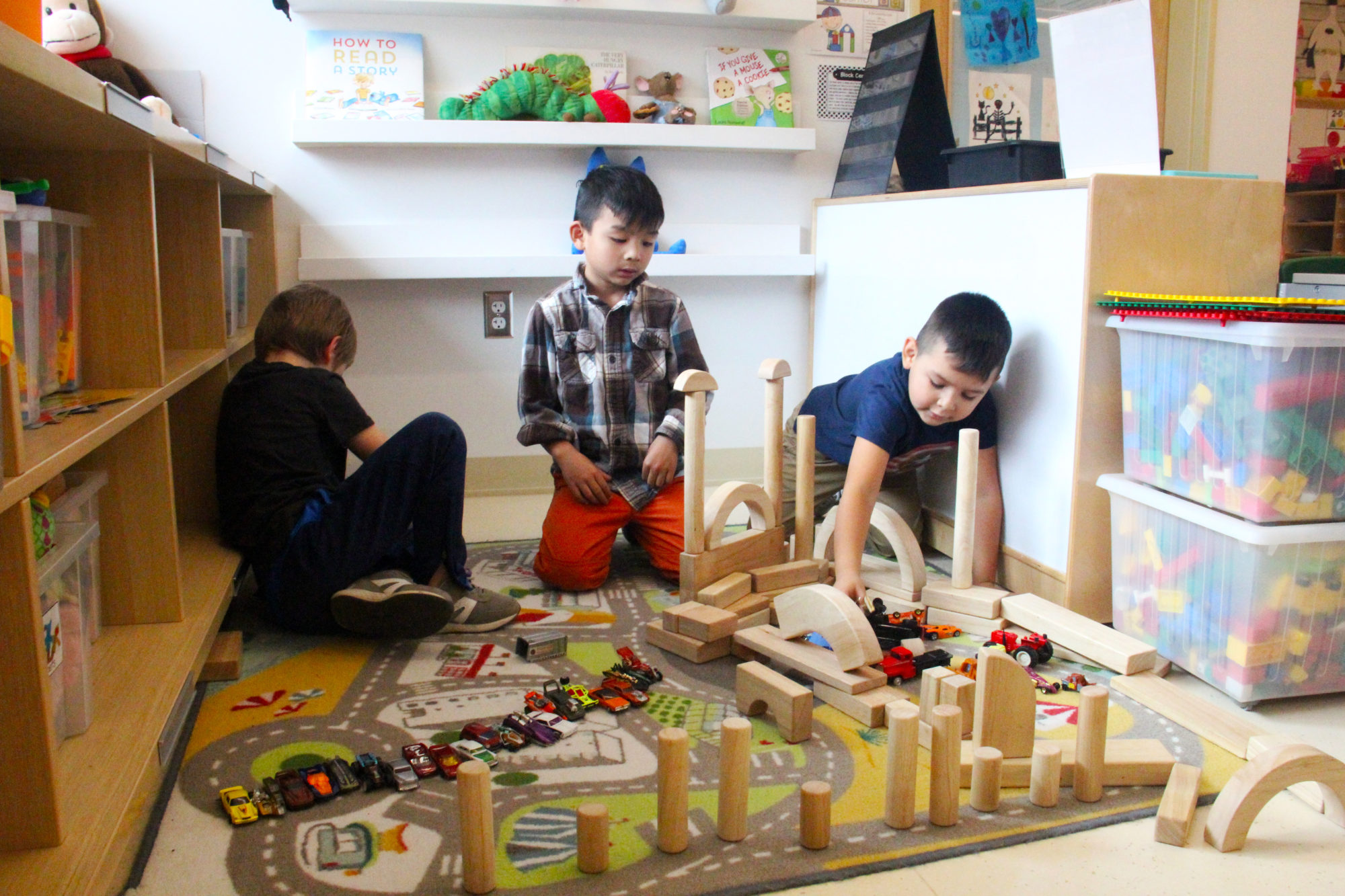Twenty-six studies point to more play for young children

What if one of the answers to reducing inequality and addressing mental health concerns among young children is as simple as providing more opportunities to play? A growing body of research and several experts are making the case for play to boost the well-being of young children as the pandemic drags on—even as concerns over lost learning time and the pressure to catch kids up grow stronger.
Play is so powerful, according to a recent report by the LEGO Foundation, that it can be used as a possible intervention to close achievement gaps between children ages 3 to 6. The report looked at 26 studies of play from 18 countries. It found that in disadvantaged communities, including those in Bangladesh, Rwanda and Ethiopia, children showed significantly greater learning gains in literacy, motor and social-emotional development when attending child care centers that used a mix of instruction and free and guided play. That’s compared to children in centers with fewer opportunities to play, especially in child-led activities, or that placed a greater emphasis on rote learning. This is important, the report’s authors noted, as it shows free and guided play opportunities are possible even in settings where resources may be scarce. “Play can exist everywhere,” said Bo Stjerne Thomsen, chair of Learning Through Play at the LEGO Foundation. “It’s the experience. Testing and trying out new ideas…It’s really about the state of mind you’re in while playing.”
The report found that play enabled children to progress in several domains of learning, including language and literacy, social emotional skills and math. The varieties of play include games, open play where children can freely explore and use their imaginations and play where teachers provide materials and some parameters. The findings suggest that rather than focusing primarily on academic outcomes and school readiness, play should be used as a strategy to “tackle inequality and improve the outcomes of children from different socio-economic groups.” That also means opportunities to play should be considered a marker of quality in early childhood programs, the authors concluded. Stjerne Thomsen said the authors have not defined an ideal amount of play as they believe it can be embedded throughout the day. More importantly, he added, is that teachers are trained to facilitate free play and guided play opportunities. “Play is often defined as recreation…not serious or practical,” said Stjerne Thomsen. Instead, many schools are focused on academic skills and standardized assessments, he added.
The findings of the report, which echo years of related research on the emotional physical and cognitive benefits of play, are notable considering that in America access to play spaces is lacking in many lower-income and rural communities. That became more noticeable during the pandemic when outdoor activities became one of the safest options for activities. Experts say opportunities to play are essential for helping kids process their feelings and changes in their life, especially after the past year of disruption and trauma. “Play is absolutely an essential part of the healing process,” said Tena Sloan, a licensed therapist and the vice president of early childhood mental health consultation and training at Kidango, a nonprofit with a network of child care centers in California. “We need to give [kids] these other ways to diffuse their stress and express themselves.” That includes, she adds, “being outside and having that freedom to play.”
Some nationwide initiatives have been working for years to create play space equity and ensure kids have access to safe, outdoor spaces, even in high-density or rural areas. The non-profit KABOOM! has built or improved more than 17,000 play spaces nationwide and has partnered with communities to build unique play spaces based on local needs, including obstacle courses for teens and “play installations” that turn everyday spaces, like bus stops, laundromats and sidewalks, into places where children can play. During the pandemic, the non-profit continued to build playgrounds and sports parks across the country with the help of volunteers; it also created “play kits” that schools could send home to children, allowing them opportunities to play in and around their home.
Play can help bring “normalcy back,” said Jen DeMelo, director of special projects at Kaboom! “This pandemic has brought to light that [play] is not a luxury, this is a necessity,” DeMelo added. “We need this. Kids need this to thrive.”
Editor’s note: This story led off this week’s Early Childhood newsletter, which is delivered free to subscribers’ inboxes every other Wednesday with trends and top stories about early learning. Subscribe today!
This story about play-based learning was produced by The Hechinger Report, a nonprofit, independent news organization focused on inequality and innovation in education. Sign up for the Hechinger newsletter.
Published at Thu, 13 May 2021 18:33:38 +0000
Article source: https://hechingerreport.org/twenty-six-studies-point-to-more-play-for-young-children/